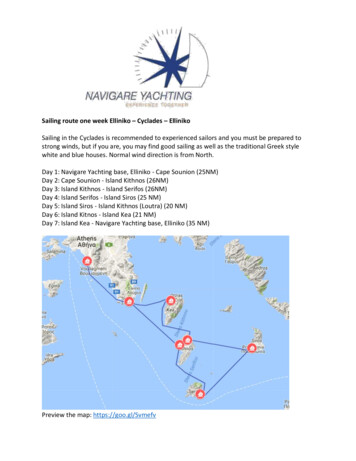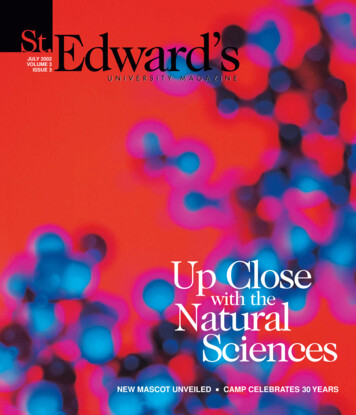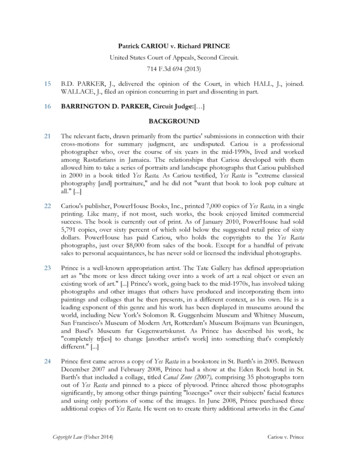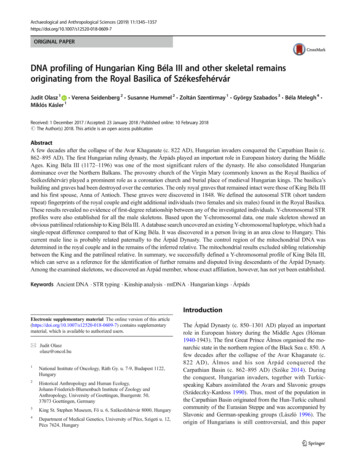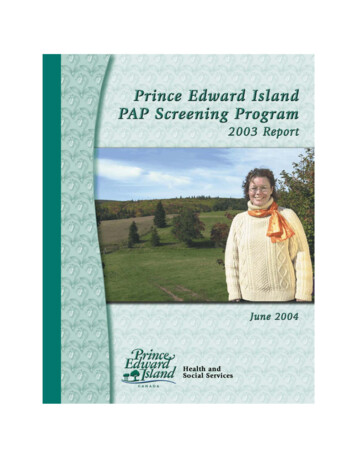
Transcription
Prince Edward IslandPAP Screening Program2003 ReportPrince Edward IslandPap Screening Program Advisory CommitteeJune 2004
AcknowledgementsThe PEI Pap Screening Program would like to thank its partners: the PEI Division of theCanadian Cancer Society, the PEI Medical Society, the Women’s Network of PEI, the QueenElizabeth Hospital Cytology Laboratory, program Advisory Committee and working groups, andthe Department of Health and Social Services, who have supported and contributed to thisprogram.Our hope is that this report provides an update on the PEI Pap Screening Program’s progress,raises the awareness about the cervical cancer status in PEI, enhances decision making andassists in policy development.Should you require further information or more copies of this report, please contact HeatherMacMillan, PEI Pap Screening Program Coordinator:Mail:PEI Pap Screening ProgramProgram Coordinator - Heather MacMillan2nd Floor, 16 Garfield StreetPO Box 2000Charlottetown, PE C1A 7N8Phone: 368-4951Email: hmmacmillan@ihis.org
Executive SummaryCervical Cancer is largely preventable, yet in 2003 an estimated 1350 Canadian women werediagnosed with cervical cancer and 410 died from the disease. Studies have shown that abouthalf of the women who develop cancer of the cervix have never had a Pap smear or have nothad regular Pap smears. The PEI Pap Screening Program’s main goal is to reduce theincidence and mortality from cervical cancer among Island women. The PEI Pap ScreeningProgram was established in January 2001 to encourage regular Pap screening for cervicalcancer. This report describes the activities in the third year of the program, January 1 toDecember 31, 2003. It also highlights the continued need for an organized approach to cervicalcancer screening in PEI.The program indicators available in this report are statistical measures of program performancethat can be used to inform policy decisions and to assess program effectiveness. The PEI PapScreening Program encourages regular screening at least every two years.Highlights of the PEI Pap Screening Program’s third year include the following: PEI’s overall two year screening rate for women aged 20 to 69 remains at 58 per cent.The screening rate has been stable over the past nine years. The Pap Screening Clinic provided alternative access to screening for 1174 Islandwomen in 2003, an increase from 993 in 2002. Since its inception on September 12,2001, 2600 Island women have been screened by the clinic. Of the women screened bythe clinic in 2003, 680 had attended one of 34 scheduled out-reach clinics heldthroughout the Island. A more effective communication strategy was implemented withclinics scheduled ahead of time. PEI’s fourth Pap Awareness Week campaign was held October 19 to 26, 2003. Thetiming of the campaign was again coordinated with Nova Scotia and Newfoundland. Theprime campaign goal was to increase awareness that cervical cancer can be preventedby regular Pap tests and to target women aged 50 and over. The key messages weredelivered using a media blitz and promotional materials that maintained the visualidentity of the original 2000 campaign. This year’s campaign also included a successful collaboration with the FederatedWomen’s Institute of PEI. Four information sessions were presented by physicians andthe program coordinator in each of the health regions.Future challenges for the PEI Pap Screening Program include continuing the developmenttowards an organized provincial screening program with emphasis on increasing participation inregular Pap screening and the production of provincial screening guidelines.Prince Edward Island Pap Screening Program, 2003 Reporti
Table of Contents1.Introduction . . . . . . . . . . . . . . . . . . . . . . . . . . . . . . . . . . . . . . . . . . . . . . . . . . . . . . . . . . . 11.1 Background1.2 Organized Cervical Cancer Screening Programs1.3 Provincial Screening Activity2.PEI Pap Screening Program . . . . . . . . . . . . . . . . . . . . . . . . . . . . . . . . . . . . . . . . . . . . . . 52.1 Program Structure2.2 Program Goals3.Program Indicators for PEI Pap Screening . . . . . . . . . . . . . . . . . . . . . . . . . . . . . . . . . . . 73.1 Participation Rates for PEI3.2 Specimen Adequacy3.3 Cytology Results3.4 Follow-up Recommendations3.5 Incidence of Cervical Cancer3.6 Mortality of Cervical Cancer4.Program Activities in 2003 . . . . . . . . . . . . . . . . . . . . . . . . . . . . . . . . . . . . . . . . . . . . . . 134.1 Access for Persons with Disabilities4.2 2003 Pap Awareness Week Campaign4.3 Education and Recruitment Activities4.4 Pap Screening Clinic4.5 Cytology Laboratory4.6 Performance Indicators5.Future Challenges . . . . . . . . . . . . . . . . . . . . . . . . . . . . . . . . . . . . . . . . . . . . . . . . . . . . 206.Appendices . . . . . . . . . . . . . . . . . . . . . . . . . . . . . . . . . . . . . . . . . . . . . . . . . . . . . . . . . . 21ABCDetailed Data for Program IndicatorsPap Campaign and Clinic AdvertisingPap Screening Clinics 2003; number of women attending by locationPrince Edward Island Pap Screening Program, 2003 Reportii
1.INTRODUCTION1.1BackgroundCervical cancer is the 12th most common cancer among Canadian women; however, it rankssecond among women aged 20-44.1 Over 90 per cent of cervical cancer can be prevented byregular Papanicolaou (Pap) screening.2 The Pap screening test is a simple and effectiveprocedure for detecting precancerous conditions. Since the introduction of the Pap test,incidence and mortality rates from cervical cancer in Canada have steadily declined. InCanada, the incidence of cervical cancer declined 50 per cent between 1969 and 1990; deathsdropped by two-thirds. However, in the last ten years, the decline has leveled off, suggestingthat the current ad hoc or opportunistic approach to screening has reached its potential.Most Pap tests in Canada are performed in physician offices in which access relies on theindividual woman’s and/or her health practitioner’s initiative. A reduction in mortality fromcervical cancer is best achieved through organized provincial screening programs, asrecommended by Canadian Task Forces in 1973, 1982, and 1989.In October 2000, the Minister of Health and Social Services, Honorable Jamie Ballem,announced the establishment of the PEI Pap Screening Program, with the primary goal ofreducing the incidence and mortality rates associated with cervical cancer in PEI. Prior to theformal establishment of the PEI Pap Screening Program in January 2001, much effort had goneinto developing the groundwork for a formal organized screening program.To better understand the barriers to Pap screening with Island women, focus groupmethodology was used in May 2000 to garner women’s accounts of their experiences with Papscreening. Three key themes emerged: personal experience, system issues, and advice forimprovement. Initiatives such as the establishment of the PEI Pap Screening Program, whichoversees the development of an organized screening program, the Pap Awareness Campaign,and the Pap Screening Clinic have been put in place to address some of the barriers identifiedby Island women.For more background information, please refer to PEI Pap Screening Program 2001 Report.This publication can be obtained from Island Information Service or by visiting the governmentWeb site at www.gov.pe.ca/go/peipap1Canadian Cancer Statistics, 20022Cancer Epidemiology and Prevention, Schottenfeld Ed. Oxford University Press, NY:1996.Prince Edward Island Pap Screening Program, 2003 Report1
1.2Organized Cervical Cancer Screening ProgramsIn Canada, numerous recommendations have been made over the past 25 years to developorganized approaches to cervical cancer screening that include population-based recruitmentand a quality management component, supported by a computerized information system.Organized programs for cervical cancer screening would increase the efficiency of screening,and enhance the management of abnormal tests.An organized screening program meets the following criteria: 3 41. Organization Facilities for performing tests, diagnoses, and treatmentsProgram structure and coordinationReferral systemFunding2. Information Systems Cytology database to provide screening history for each woman Histology database to provide diagnostic information Colposcopic database to provide follow-up information Recall system to doctors for overdue Pap tests Linkage with population registry for recruitment3. Quality Assurance Guidelines for screening, identify target population Performance indicators for reports, ongoing evaluation andmonitoring Program follow-up of abnormal Pap tests (“failsafe” mechanism) Training standards, quality control Treatment options4. Education and Recruitment Pap Awareness Campaign Education for Professionals Educational Resources Recruitment initiatives for women not screened regularly, and forunscreened women3Interchange 95 Cervical Cancer Screening Workshop, CMAJ 1996: 154(12) p. 1847-1853.4Hakama, Chamberlain, Day et al. Evaluation of screening programs for gynaecological cancer.British Journal Cancer 1985; 52: 669-6734Prince Edward Island Pap Screening Program, 2003 Report2
1.3Provincial Screening ActivityOrganized screening programs, as described above, are in various stages of development inthe provinces. Well established programs are in British Columbia and Nova Scotia, with recentprogress in other provinces such as Alberta, Manitoba, Ontario, Saskatchewan, andNewfoundland. Table 1.1 highlights the progress of provinces toward implementation of thecomponents of an organized screening program. No province has all of the components inplace.In Prince Edward Island, some of the essential components in support of an organizedscreening program in place are: centralized laboratory system with a computerized information system, network of family physicians that provide “opportunistic” access to screening, education and recruitment initiatives for unscreened and not regularly screened women- Pap Clinic and out-reach clinics that provides alternative access to screening- Pap Awareness Campaign formal program supported by an Advisory Committee, coordinator and established workinggroups, established set of performance indicators on screening coverage, quality assurance andmanagement of Pap test results.The components of an organized screening program that still need to be implemented in PrinceEdward Island are: use of the computerized information system for recall notice to physicians for abnormal andoverdue Pap tests, use of the computerized information system for recall notice to women for abnormal andoverdue Pap tests, colposcopic database to provide follow-up information, provincial screening guidelines, program follow-up of abnormal Pap tests, education for professionals to enhance recruitment and quality assurance.Prince Edward Island Pap Screening Program, 2003 Report3
Prince Edward Island Pap Screening Program, 2003 ReportT Program Report includingperformance Indicators- activity inRHA’s-Nurse pract.in N. Ontario-immigrant &-publicrecruit-comm.facilitators-honorarium forWWC-reg. resourcenetwork- Pap Clinic- nursepractitioners Recruitment initiativesSource: CCPN Meeting, January 2001, updated May 2003TTTTTwebsiteTPolicy andProceduresManualT2003every 2yrTin progress(Bethesda)Twebsite(Spring 2001)TTevery 2yr(2001pilotletters MDs)(Bethesda)TT-peer educ.-minorities- activityin RHA’sTTStandardsandGuidelinesTannualTreport draftpilotT designcomplete-asian &-aboriginal &-correct.facilityTBCCAwebsiteTT Letters toMDTevery 2yrTTT(Walton)T(1976)1949Dr. rennaShearerHood1998RobbiHowlett1996-40% ofpaps2000-85% ofpapsBCALTASASKMANONT Educational ResourcesT 19962002 progPilot inMontr(16labs)QUT websiteT(Oct1999)Nurse &Cyto QAManual,1/4 labsTongoingT2003annual1/4 labsTongoingT(regionallevel)1999-2000T18mo gapin data,NB Education for ProfessionalsT(Oct 1997)Nurse ManualOffice Manual Training Standards Treatment OptionsEducation and Recruitment: Pap Awareness CampaignT Letters toMD since’96Tannual Program follow-up of abnormalpapsT(Oct 2000)every 2 yrQuality Assurance: Screening Guidelinesletters &)T(1999 pilot-T Population database(for individual recruitment)T(Walton)TT(Bethesda) Histology database(diagnosis linked with cytology)T(1988) Recall system to MD’s foroverdue papsT(1996)Information Systems: Cytology database(provides &’s screening 2001HeatherMacMillanOrganization:Program start date, CoordinatorNFNS Colposcopy data(follow-up linked with cytology)PEISCREENING ACTIVITYTable 1.1Provincial Screening Activity, May 20034
2.PEI PAP SCREENING PROGRAMThe inaugural meeting of PEI Pap Screening Advisory Committee was held on January 16,2001. Structure of the program as recommended by the Committee was approved by theMinister of Health and Social Services on March 21, 2001.2.1Program StructureThe program structure described below was designed to provide coordination to the diverseresponsibilities and interests in cervical cancer, and to provide accountability.* Support and assistance role to the Pap Screening Advisory CommitteePrince Edward Island Pap Screening Program, 2003 Report5
The Pap Screening Advisory Committee provides recommendations in the development,implementation, and direction of the PEI Pap Screening Program. Members includerepresentatives from the Department of Health and Social Services, the Provincial PathologyLaboratory, the PEI Division of the Canadian Cancer Society, the Medical Society of PEI, andthe Women’s Network PEI. Program activities are carried out by many parts of the healthsystem, with additional initiatives developed by working groups and overseen by the PapScreening Advisory Committee.The working groups established include the Education and Recruitment Working Group,Screening Guidelines Working Group, Cytology Registry Working Group, and PerformanceIndicators Working Group.2.2Program GoalsAs approved by the Pap Screening Advisory Committee on January 16, 2001, the goals of thePEI Pap Screening Program are:CTo reduce the incidence and mortality rates associated with cervical cancer in PrinceEdward Island.CTo recommend appropriate practices covering all areas of an organized Pap screeningprogram which includes recruitment, screening guidelines, computerized cytologyregistry, quality assurance, evaluation, follow-up notification and educational resources.CTo identify and overcome barriers which prevent regular Pap screening among women inPEI and to identify and implement incentives which encourage regular screening.CTo increase public knowledge of the need for regular Pap tests as a preventative healthcare measure and ensure sustainability of Pap Awareness Week Campaign.CTo increase awareness among health professionals of the need for regular Pap smearsas a preventative health care measure.Prince Edward Island Pap Screening Program, 2003 Report6
3.PROGRAM INDICATORS forPEI PAP SCREENINGThe program indicators available for this report are statistical measures of programperformance. These indicators can be used to inform policy decisions, to assess programeffectiveness, and to compare with other jurisdictions.The indicators presented in this report include: Provincial participation rates for PEI Specimen adequacy Cytology results Follow-up recommendations Incidence of cervical cancer Mortality of cervical cancerAdditional detailed data on the indicators presented in this section are found in Appendix A.3.1Provincial Participation Rates for PEIParticipation in Pap screening programs are traditionally reported on an annual basis, tocorrespond with most physician recommendations. However, as organized screening programsare developing in Canada, there is interest in participation rates that correspond with provincialrecommendations of every two years, and with national recommendations of every three years.Table 3.1 provides the most recent provincial screening rates for all three screening intervals.These rates are monitored for women aged 20-69, since not all women under 20 or over 69require screening. Pap screening is strongly associated with age. Table 3.1 demonstrates thatparticipation in Pap screening decreases with age, regardless of the screening interval. Ingeneral, rates are highest among women in their reproductive years after which there is a periodof decline.Table 3.1PEI Pap Screening Rates (Population percent by age group)Screening PeriodOne year(2003)Two years(2002-2003)Three years(2001-2003)20 to 3444%62%69%35 to 4939%59%67%50 to 6937%52%57%Total 20 to 6940%58%65%Age groupPrince Edward Island Pap Screening Program, 2003 Report7
Figure 3.1PEI Pap Screening RatesFigure 3.1 demonstrates the stability of PEI’s annual screening rate. Each year, about 40 percent of PEI women between the ages of 20 and 69 were screened with a Pap. This is similar tothe annual screening rate described by Nova Scotia5, where a program to increase screeningwas launched in 1991.Figure 3.1 also demonstrates the slight increasing trend in PEI’s three year screening rates. Inthe most recent three year period, 65 per cent of PEI women between the ages of 20 and 69were screened with a Pap. This is similar to the rate described by Nova Scotia5 for 1995 to1997. This trend will be confirmed if the next three-year period (2002 to 2004) will be higherthan 65 per cent - this will not be available until next year. Participation rates described in thisreport are more accurate than rates from surveys asking women to self-report their most recentPap test. Most surveys of self-report provide socially desirable responses that tend to overreport screening.Participation in Pap screening on PEI is far from complete. The program will identify moretargeted initiatives to increase regular screening of PEI women, including activities withincommunities to increase awareness and participation.5Statistical Report 1995 - 1997, NS Gynaecological Cancer Screening Programme, October 1999Prince Edward Island Pap Screening Program, 2003 Report8
Table 3.2 demonstrates that participation in Pap screening varied by health region. The lowerscreening rates were still seen in East Prince and West Prince, when comparing the mostrecent one year rates, and the most recent three year rates. In all regions, the lowest screeningrates are among women aged 50 and over. The regional screening rates for 2003 are similar tothose described in the 2001 and 2002 Reports. The screening rates in East Prince and WestPrince still show the lowest rates in all age groups, particularly 50 to 69 year olds. This agegroup will have to be targeted more thoroughly to increase rates.Table 3.2PEI Pap Screening Rates, 1 year period ending 2003(%screened by Health Region and age group)Health RegionAge group3.2WPEPQK200320032003200320 to 344141454635 to 493434424250 to 6931284141Total 20 to 6935344343% screened in3 year period(1999 to 2001)58%58%68%69%Specimen AdequacyCervical smears are classified in the laboratory on the basis of their adequacy for interpretation:satisfactory, satisfactory but limited for interpretation, and unsatisfactory. Factors that limit thesmear interpretation include blood, inflammation, poor fixation, contamination, or an inadequatenumber of cells. Table 3.3 demonstrates that 0.5 per cent of smears were unsatisfactory forinterpretation in 2002. This is similar to the 0.3 per cent in Nova Scotia5, and less than the 3 percent reported in British Columbia6. Fluctuations in PEI’s adequacy rates that are less than 1 percent of Pap tests are the result of small changes in the actual number of inadequate tests fromone year to the next.Table 3.3PEI Specimen Adequacy, by year (Rate per 1,000 Pap 43850872866874Satisfactory, but 13.85.421,66221,99621,88522,99522,83822,201Total # Pap testsPrince Edward Island Pap Screening Program, 2003 Report9
3.3Cytology ResultsThe diagnostic results of all satisfactory smears are presented in Table 3.4. Diagnosticcategories are based on the Bethesda classification. About 4 per cent of Pap tests have aresult that involves low grade or high grade cellular changes. This is similar to the 2 per cent inNova Scotia5, and the 5 per cent reported in British Columbia6 and Ontario6. These rates havebeen stable over the past six years.Table 3.4PEI Cytology Results, by year (Rate per 1,000 Pap tests, by age group)YearCytology ResultNormal1Low Grade Changes2High Grade 9602328252432317106586includes changes within normal limits and benign cellular changesincludes LSIL, ASCUS, and AGUS non-suspiciousincludes HSIL, AGUS suspicious for malignancy, and carcinoma3.4Recommended Intervals for Follow-upThe laboratory report to the physician for each smear includes: the cytology result a recommended interval for follow-up.The follow-up may involve another pap test, or other investigations such as colposcopy, biopsy,or clinical treatment. Recommendations are based primarily on the current cytology result, butmay also be influenced by the patient’s clinical condition and Pap test history. Table 3.5presents details of recommendations by cytology result.Table 3.5PEI Follow-up Recommendations, 2003Follow-up Recommendation(# of Pap tests)12 months6 monthsPost-partumOtherfollow-up4No 113824Cytology ResultNormal1Low Grade Changes2High Grade ChangesUnsatisfactory12343includes changes within normal limits and benign cellular changesincludes LSIL, ASCUS, and AGUS non-suspiciousincludes HSIL, AGUS suspicious for malignancy, and carcinomaincludes immediate, colposcopy/biopsy, further gyne investigation, as clinically indicated, after therapy62000 CytoBase Report, Insctye Corp. 2001.Prince Edward Island Pap Screening Program, 2003 Report10
Overall, the laboratory reports provided recommendations for 95 per cent of the Pap tests,similar to 2001 and 2002. All Pap tests with results of high grade changes had arecommendation of immediate follow-up. Pap tests with results of low grade changes had themost variable follow-up recommendations. The majority had a recommended follow-up of sixmonths. However, three with low grade changes had no recommended follow-up, and therewas an increase in the number with a 12 month follow-up since 2002. The majority of Pap testswith normal results had a recommended follow-up interval of 12 months. Some confusion mayensue with other follow-ups of normal results, such as “as clinically indicated” that refers to theneed for clinical treatment of an infection, but not for a repeat Pap test.The follow-up assigned by the laboratory will need to be reviewed after the PEI Pap ScreeningProgram adopts official screening guidelines. At that time, consideration should also be givento the laboratory software producing a default recommendation for normal results.Prince Edward Island Pap Screening Program, 2003 Report11
Reduction of PEI’s incidence rate of cervicalcancer is a long-term goal of the program.However, in the next five years, PEI can expectthe rate to continue to increase as increasedscreening finds new cases.Trends in Incidence - FemaleCervical Cancer40Age-adjusted rate per 100,0003.5Incidence of Cervical CancerIn Canada, the incidence of new cases ofcervical cancer has been declining. In PEI,however, the rate has been increasing, asshown in the figure to the right. The mostcurrent estimate of the incidence rate is 13 newcases per 100,000 PEI women, compared toeight in Canada7. PEI has consistently had oneof the highest rates of cervical cancer inCanada due mostly to low screening PEIMortality of Cervical CancerIn Canada and PEI, the mortality rate forcervical cancer has been stable, as shown inthe figure to the right. The most currentestimate of the mortality rates are three deathsper 100,000 PEI women, compared to two inCanada8.The PEI program expects to maintain the stablemortality rate, even as incidence increases, byensuring follow-up. The long-term goal of theprogram is to reduce these preventable deaths.Trends in Mortality - FemaleCervical Cancer40Age-adjusted rate per anadian Cancer Statistics, Canadian Cancer Society & Health Canada, 20028Cervical Cancer Screening in Canada: 1998 Surveillance Report. Health Canada, 2002.Prince Edward Island Pap Screening Program, 2003 Report12
4.PROGRAM ACTIVITIES IN 2003The activities of the PEI Pap Screening Program in 2003 were carried out by the Program’sWorking Groups (see section 2), and were overseen by the Pap Screening Advisory Committeewith support of the program coordinator.4.1Access for Persons with DisabilitiesIn the fall of 2002, the program supported an initiative to purchase a multi-functionalexamination table that could provide medical procedure access to not only women with physicaldisabilities but to any individual who requires supportive access (aging population, obesity,chronic disease conditions). The multi-functional examination table is located at the FourNeighborhoods Community Health Center. It is available for use by any family physician,specialist, health professional, and the Pap Screening Clinic by pre-booking. The Educationand Recruitment working group coordinated a promotion piece with Island Focus and membersof the Council for the Disabled that aired in November 2003 and an out-reach Pap clinic wasalso held. Further promotion to the community groups to encourage individuals to utilize thisservice is required.4.22003 Pap Awareness Week CampaignPEI’s fourth Pap Awareness Week campaign was held October 20-26, 2003 to raise theawareness of the importance of regular Pap screening for the prevention of cervical cancer.The 2003 campaign maintained the visual identity of PEI’s previous three campaigns. Messagesand format were quite similar and the campaign was again coordinated with the Pap AwarenessWeek campaigns in Nova Scotia and Newfoundland. The media blitz and promotional materialshad the key messages of: Cervical cancer can be prevented. A pap test every two years can save your life. Call your doctor or the Pap Screening Clinic for an appointment.Brochures, posters and magnets were distributed throughout the Island and the campaign hadlots of newspaper advertisements, radio, TV ads for the upcoming out-reach PAP clinics as wellas a few news stories. The campaign received a positive response. Note the increase in papscollected in the month of October in Figure 4-2. The campaign will continue with moreemphasis given to recruitment initiatives.Details of marketing and advertising are shown in Appendix B.New in this year’s campaign were a series of information sessions. The Federated Women’sInstitute of PEI and the PEI Pap Program joined forces to move women beyond awareness toaction as part of the PEI Pap Screening Program’s Pap Awareness Campaign held in October(see section 4.3).Prince Edward Island Pap Screening Program, 2003 Report13
Figure 4-2Pap CollectionMonthly Collection of Pap Tests in PEI, January 2000 to December 2003The campaign has demonstrated increased awareness of Pap screening among Island women.The impact on annual screening rates is small (see section 3). Since the opening of the PapScreening Clinic in 2001, the campaign has produced October peaks in monthly screening. TheOctober peaks in 2003 were slightly lower than the previous two campaigns. This may be theresult of decreased budget (2003 was half the budget for 2002). Between budget reduction forthe campaign and the repeated exposure to the same marketing materials we are seeingsmaller peaks in screening as would be expected. This indicates some changes are requiredfor 2004 campaign. To increase screening rates, the Pap Screening Program will need to lookat a more integrated approach of engaging communities and removing barriers, as well asawareness campaigns.4.3Education and Recruitment ActivitiesThe majority of activity this year revolved around supporting the promotion and advertisement ofthe out-reach clinics being held in each of the health regions. Newspaper and TV Ads gave alist of the pre-scheduled out-reach clinics (see Appendix B). The success of these indicated theads had an impact on the out-reach clinics (see Appendix C).This year the Federated Women’s Institute of PEI and the PEI Pap Program joined forces tomove women beyond awareness to action as part of the PEI Pap Screening Program’s PapAwareness Campaign held in October. The two groups collaborated to present an provincewideseries of information sessions on Pap screening and hormone replacement therapy.Prince Edward Island Pap Screening Program, 2003 Report14
Information session were targeted to middle aged and older Island women, since they are thelargest demographic of women currently not being screened. A direct personal approach byphysicians and other health professionals has been shown to be the most effective method ofmotivating women to get screened. Physicians were present at the information sessions todeliver the messages to participate in regular screening. In addition to the physician message,there was a call to action by respected spokesperson, Honorable Marion Reid.Four information sessions took place that coincided with the Women’s Institute fall meetingschedules. Members were encouraged to bring their friends and relatives as sessions wereopen to the public. In total, 340 women attended. Each session had between 50 and 100women."What a great presentation you all put on last night. It was so well presented. I wastalking to my co-workers this morning and one of them said she hasn't been for onesince 1998. I told her to get to a clinic or to your doct
1 Canadian Cancer Statistics, 2002 2 Cancer Epidemiology and Prevention, Schottenfeld Ed. Oxford University Press, NY:1996. Prince Edward Island Pap Screening Program, 2003 Report 1 1. INTRODUCTION 1.1 Background Cervical cancer is the 12th most common cancer among Canadian women; however, it ranks second among women aged 20-44.1 Over 90 per cent of cervical cancer can be prevented by

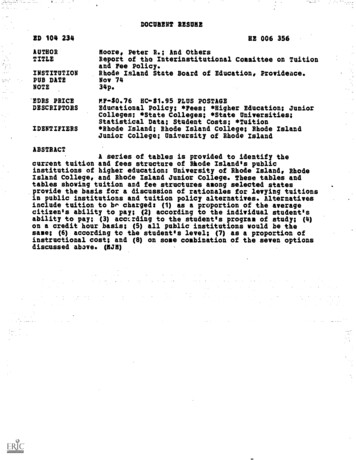
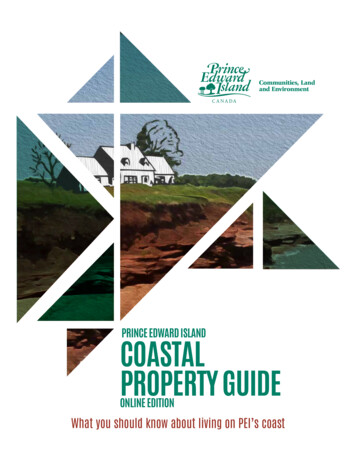
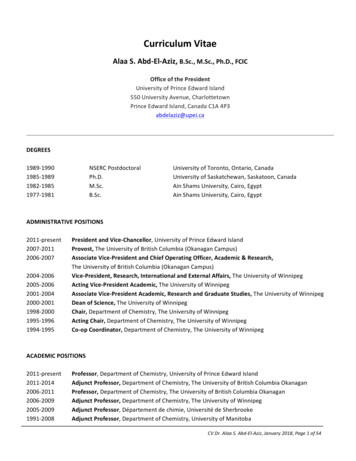
![December 31 [The last day of] the old year and what a](/img/40/paro-almanac-r.jpg)

